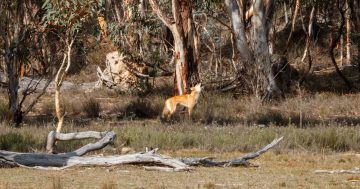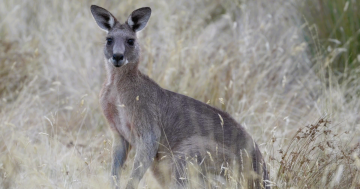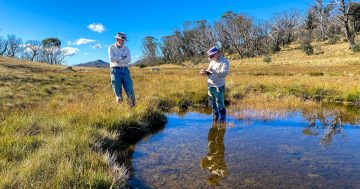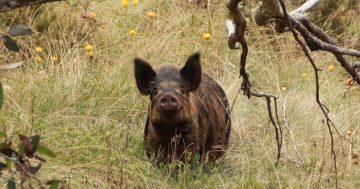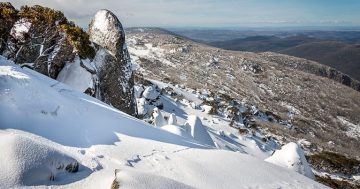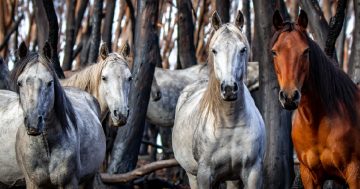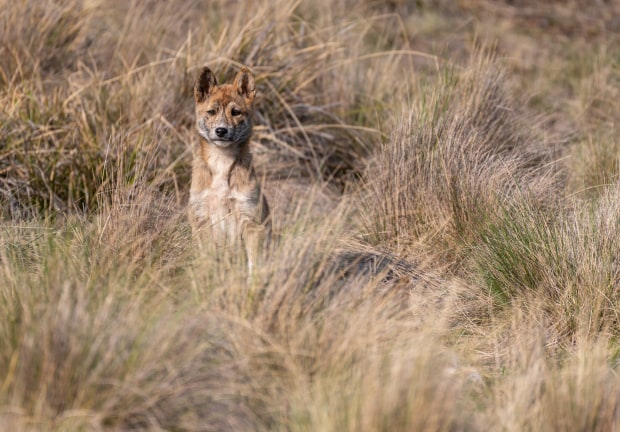
A recent study found pure dingoes living in Namadgi National Park. Photo: Lachlan Hanrahan.
Canberra and NSW farmers have expressed their fears the ACT’s wild dog controls will change as the government considers recognising dingoes as protected native animals.
A recent genetic study of wild dogs in Namadgi National Park found all 20 animals sampled had 100 per cent dingo ancestry with no hybridisation with feral domestic dogs.
Environment, Parks and Land Management Minister Rebecca Vassarotti said this meant the government would consider whether to formally recognise the dingo as a distinct native animal in the Territory.
“For many years it was assumed that wild dogs in Namadgi National Park were not native, and that they were therefore to be managed as a feral pest species,” she said.
“As a result of this research, the ACT Government will now look at exploring policy options to recognise the dingo as a native animal protected under the Nature Conservation Act 2014 to reflect their ecological and cultural values.”
It’s left farmers and graziers with land near the Namadgi National Park concerned about what this will mean for wild dog controls in the future.
Dingoes are protected within the park but control activities (such as trapping and lethal controls) are undertaken by the government in buffer zones on the edges.
Concerned landholders met with Ms Vassarotti and other government representatives at Tharwa Community Hall to express their fears.
Local grazier Matthew Gregory MC’d the event, and stated that while he wasn’t concerned about recognising there were dingoes in the wild dog population, he and many others were worried the reclassification would “unwind” the lethal control measures that currently protected their stock.
“They’ll be here and continue on killing the fauna, killing everything that’s about,” he said.
“We’re fearfully concerned there’s another agenda from advocacy groups … that will undermine the control program we have.
“That will be the start of the end for us.”
Ms Vassarotti reassured the community that legislative recognition of dingoes as a controlled protected species, rather than a pest species, would not change current control practices.
“The science is telling us we definitely have dingoes in Namadgi, but we are definitely not going to stop controlling them,” she said.
Rather, it would allow for the development of a Controlled Native Species Plan, similar to what has been established for the control of the eastern grey kangaroo populations.
Recognition of kangaroos under this plan has also allowed for carcasses and skins to be used for cultural purposes by the Ngunnawal community.
Ms Vassarotti said dingoes both played a “crucial role” as a top-order predator in our ecosystem and were a significant animal to First Nations communities.
“I think classifying them as a pest species is problematic,” she said.
“When reviewing our policies, the ACT Government will consider the protections for dingoes as native animals, recognising the strong cultural connections of First Nations people, while maintaining the ability to undertake mitigation strategies to limit attacks on rural properties that result in stock losses and emotional stress for landholders.
“I want to create a sustainable and long-term future for dingoes in the ACT that will work for everyone.”
ACT Flora and Fauna Conservator Bren Burkevics was also at the meeting.
He said if dingoes were reclassified as a native species, then the government would be breaching its own legislation by lethally controlling them.
Mr Burkevics explained he felt developing a Controlled Native Species Plan at the same time as the classification changed was necessary and would hold the government to account for controlling their population.
“[Let’s make the changes] a simultaneous action so lethal action can continue … there’s no hidden agenda or plan to suddenly change the program,” he told the group.
“The advice I’ve formally received means we need to recognise dingoes in their own right, but that doesn’t mean wild dogs aren’t here as well.”
National Wild Dog Coordinator Greg Mifsud said he understood the concerns about leaving dingoes in the wild, especially in farming areas.
He pointed to the Shannons Flat and Bredbo dingo and wild dog control plan from 2008 (which he worked on) as an example it could work.
“Eighteen years down the track, we have 200 to 400 dingoes in the core of Namadgi and still have sheep production on the perimeters with an effective program,” Mr Mifsud said.
“It doesn’t really matter if they’re a dingo or a [wild] dog, this is about how the legislation will provide protections [for control] going forward.”
The government is not proposing to change the taxonomy of dingoes in the ACT at this time.
They’re currently recognised as an ancient breed of Canis familiaris with distinct characteristics.
Research will continue investigating the status of the dingo in the ACT to determine management options.












